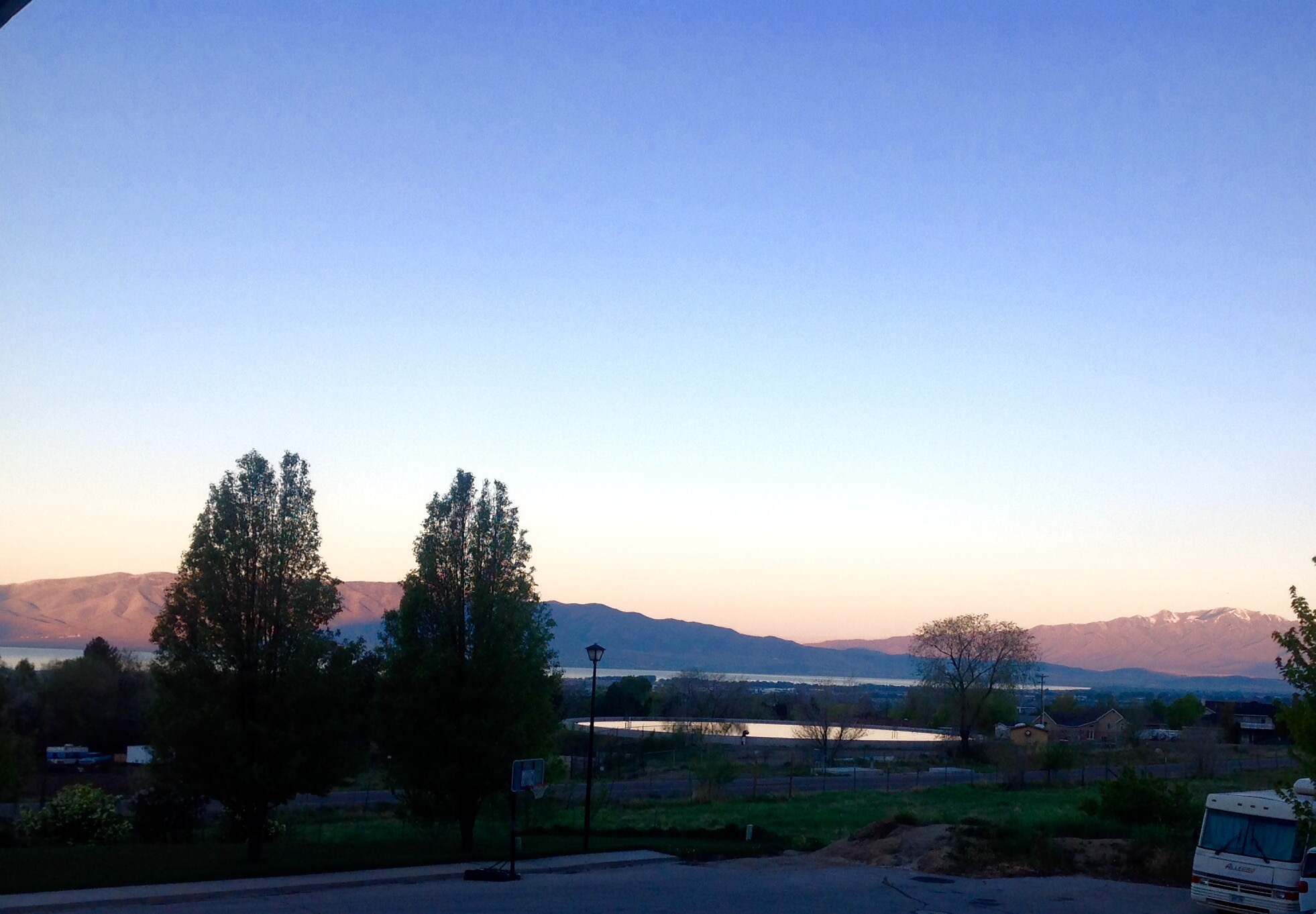The Fallacy Of A Clear Blue Sky
It’s beautiful isn’t it? Not a cloud in the sky. It seems like you can see forever.
It’s a lie. It’s an illusion. But, it’s an illusion that we’ve been so programmed to accept that right now you’re wondering what kind of click-bait this article is turning out to be.
I live in Utah, on the side of a mountain. (We call em “moun’ins” here but that’s not really important to the story.) I didn’t buy my house for the view. I bought my house because it’s 4000 square feet and has 9 bedrooms. (With eight kids at home, that was more than a coincidence.) However, my house has an awesome view. Looking West, I can see my small town of Pleasant Grove laid out before me. Five miles away is Utah Lake, the largest non-dam controlled freshwater lake in the Western United States. On the other side of the lake are the Oquirrh Mountains. (Pronounced OAK-er moun’ins, if you’re reading this out-loud.) And the town of Eagle Mountain at their base.

The view changes day to day. And month to month. The above picture is from last summer. This month has been really snowy. At times, I can’t see passed the end of my street. Sometimes the inversion kicks in and the valley lies under a greyish-brown blanket of smog. Other times, especially after a storm, the air is clear and I can see for miles and miles.
So, why say that it’s an illusion?
In my job I work with a lot of numbers.
I’ve lost 134 times.
You count them?
This is baseball. We count everything.
“For Love Of The Game”
I don’t work in baseball, but we count almost as much as they do. Personally, I have to keep track of how available our computer systems are. If a program fails, I not only have to work with the team that will fix it, I have to work with the team that tracks how much it impacted our agents. There are several variables:
- Start time
- End time
- Total staffed agents
- Total impacted agents
- What lines of business the impacted agents staffed
- What percentage of the impacted agents job was affected
And we track all of that in 30 minute intervals. And I have four sites that I track. That’s a lot of data points.
I get a report everyday that shows me how much time we lost the previous day. Most days it says 0. (Our systems stay up about 99.95% of the time.) But, if there is an outage, I see the daily updates. Then, the dailies roll into a monthly. I have to calculate the average availability of each line of business for the month. We have penalties based on how many minutes we lost.
The amount of data that goes into my report is staggering. And since I am doing rollups of data, my report is by its very definition not comprehensive.
Rodney, I noticed on your report that our 1117 line of business was at 99.8% available for last month. Can you explain where we lost minutes?
Sure, I can, but not from the report I sent. the 1117 line of business involves agents in four different states and the 99.8% was for 31 days. I have to go dig to find that data.
However, if I were to send my raw data instead of the report, whould that be better? It would have all the information that someone might possibly need. Would that be more clear? Of course not. My report is actually very clear, including only a few rows and columns with a color coded results column showing what penalty we incurred, if any.
In my report, I got clarity by obscuring data.
Let’s go back to the view from my front porch. The reason the sky is blue, is because moisture in the air causes the light from the sun to refract. The blue light is scattered more than the red light. But, think about that. The molecules in the air scatter light. They are actually obscuring our view. They just are doing it with only a small amount of water. We don’t see clearly, we see less obscured.
When we get clouds, we get more obsuring, of course. Fog? Even more. But, because we have an atmosphere and because we have water, even the clearest day is actually obscuring our view. What would happen if our view wasn’t obscured? We’d get a view like the astronaughts got on the moon. They could see the sun and the stars at the same time.
But, like my end-of-month report, the obscuring we get from the sky is important and helpful. It screens out the stars, but it diffusses the light so that we can see things in shadow and under tables and things.
The next time you stand on a mountain top (and you should really set a goal to stand on a moun’in top at least once before you die) and you gaze across the valley, appreciate what a beautifully obscured view you have, even if you can see the horizon.
Rodney M Bliss is an author, columnist and IT Consultant. His blog updates every weekday. He lives in Pleasant Grove, UT with his lovely wife, thirteen children and grandchildren.
Follow him on
Twitter (@rodneymbliss)
Facebook (www.facebook.com/rbliss)
LinkedIn (www.LinkedIn.com/in/rbliss)
or email him at rbliss at msn dot com(c) 2017 Rodney M Bliss, all rights reserved
